
If you happen to be in Tibet for the first time, you won't probably
manage to escape so-called mountain disease. Any pills and natural
adaptogens (weather it's ginger, garlic, bat wings and toad livers)
won't surpass the chief doctor called time. Your mortal body itself must
adapt to high altitude.

During the first 7-10 days you'll have to live with terrible headache
24 hours a day trying to appease it with various vitamins. Sometimes
it'll seem that you're like in jelly. Your mood will change at the speed
of sound varying from pig squeals of delight caused by nonsense to old
man's grumbling and a desire to tell each and all to go to hell.
But then it all will be OVER and you'll feel the pure pleasure of being in such a marvelous place.
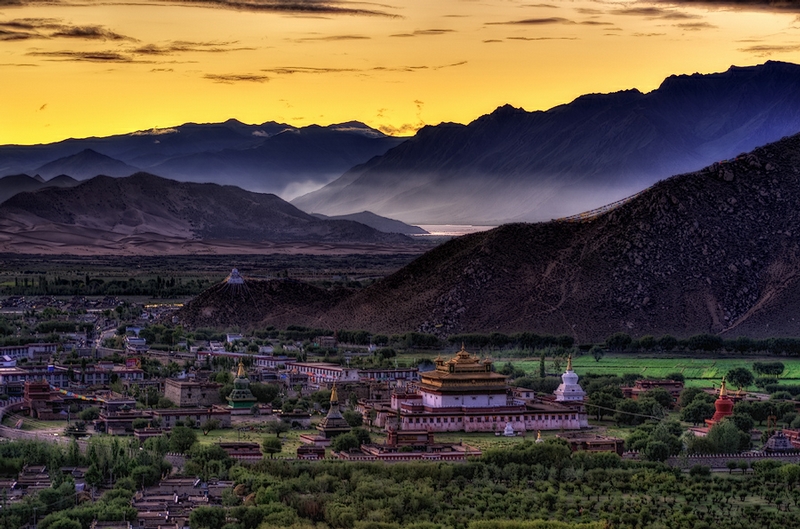
Samye Monastery.
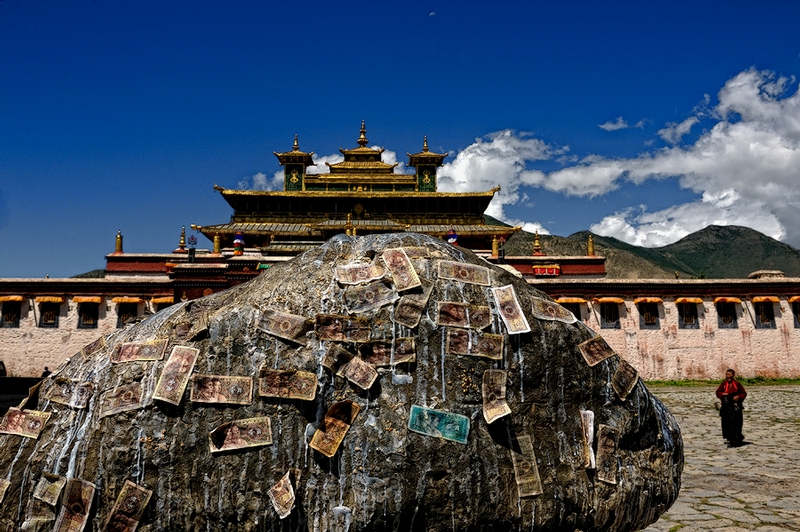
A stone serving as an altar.
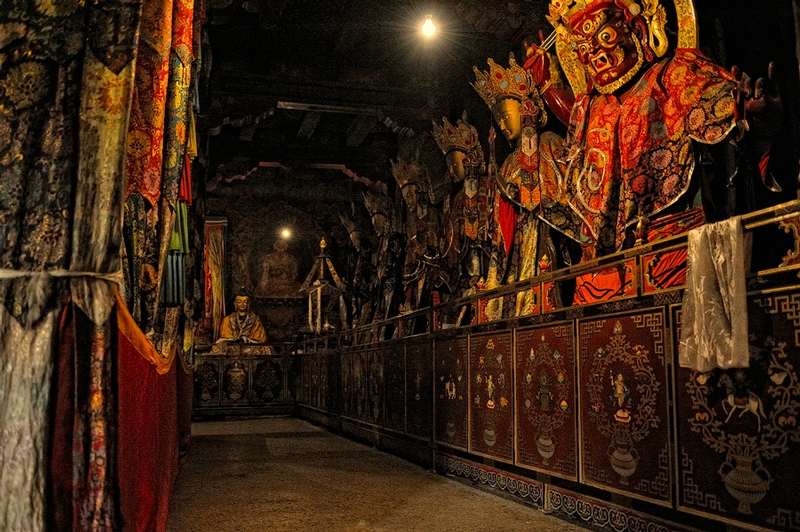
A prayer hall.
A solar powered kettle.
A beggar.
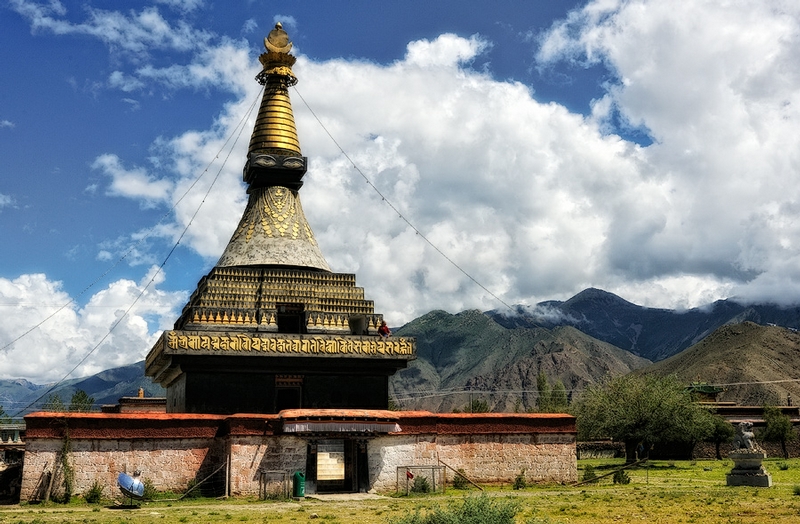
A black stupa.

Each of us has his own reasons for going to Tibet - someone looks for
the wisdom and knowledge of local monks, while others dream of climbing
the highest mountain in the world. Pictured: goats against a background
of Mount Everest.
The road to Everest.
To reach its top (8.848 m) one must possess a considerable amount of
money and health. An average person usually climbs a little higher than
the base camp (it's about 5.200 m) and then knocks it off as the head is
spinning wildly and the body is really exhausted.
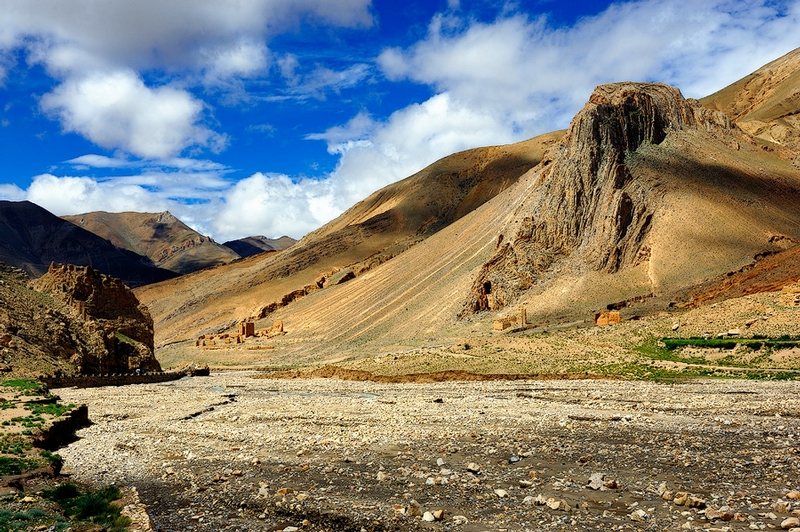
This is a real MOUNTAIN, huge and impressive! Yaks, dark birds, wild
mountain sheep (which are not that easy to frighten, by the way), biting
wind, ice water and ancient Rombuk Monastery add even more charm to the
place.
Dogs on the road to Everest against a background of the checkpoint.
A goat.
Monks go to the monastery against a background of the base camp.
The base camp. Welcome to the Hotel California!
Rombuk Monastery.
Like hives at a prosperous apiary, numerous stupas surround the
monastery. They contain the remains of its original inhabitants (monks
and holy men) and are all of different sizes.
Empty, cold, gray, gloomy, and only a huge shiny prayer wheel is being rotated with some otherworldly grinding...
Mountains are all around. Big and small, in the snow caps and without
them, famous and anonymous but all are unbelievably beautiful!
Mount Kailash at night.
Darchen village is the place from which the kora around Kailash begins.
It's a very interesting rite which consists in taking a circuit around
sacred places, buildings or natural formations in a clockwise or
counterclockwise direction.
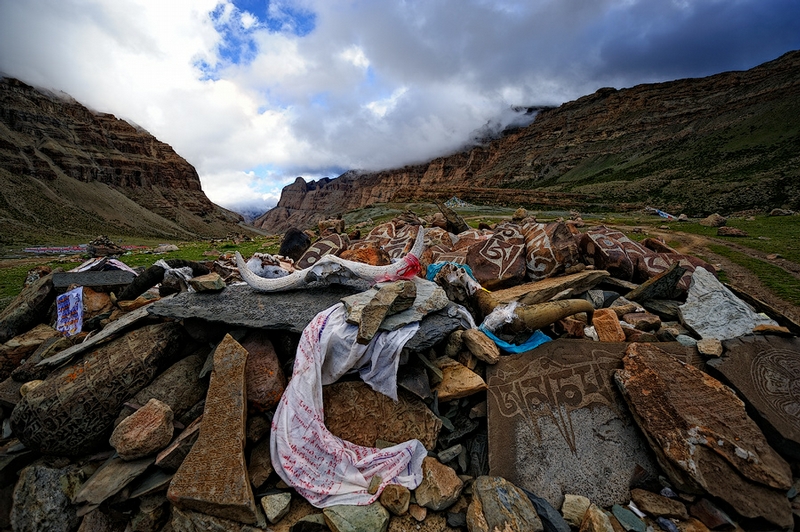
The kora around Kailash improves karma, straightens chakra, heals hair
loss and other diseases. There are two kinds of kora: external (the
easier one) and inner (for the very tough pilgrims who has already made
12 external koras).
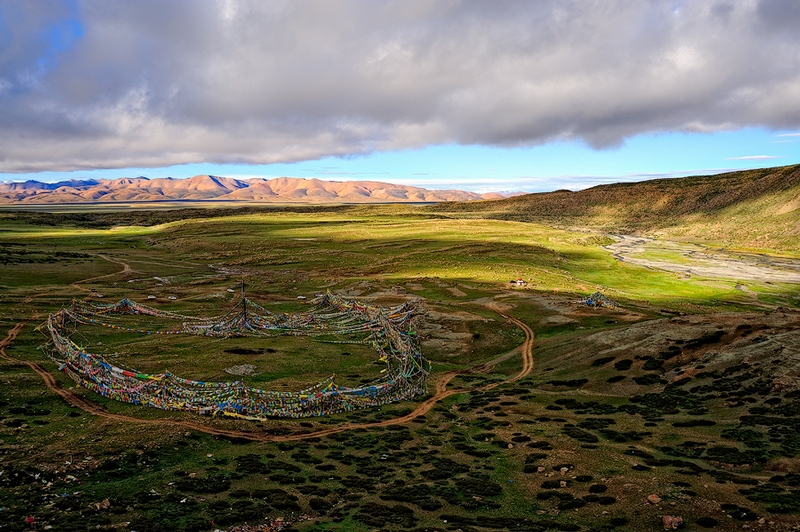
The view of the starting point from the plateau of sky burial, a grim but fascinating place we have already spoken about in one of the previous posts.
The kora is performed on foot or by the means of "spreads", i.e. a
pilgrim measures the distance with his body spread out on the ground. It
looks like this: he folds his hands, reads the mantra, flops down and
stretches out, then gets up and repeats all this until he covers a 53 km
route around the mountain.
These ones are "spreaders".
A pilgrim.
The weather is worsening.
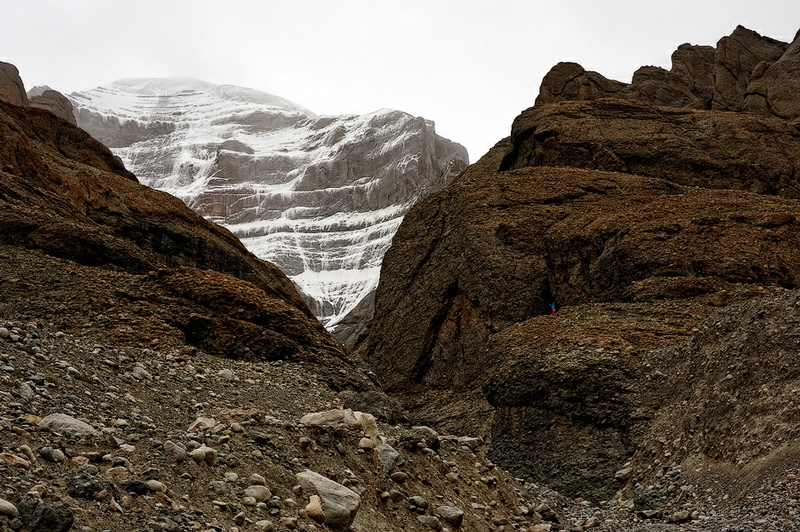
The western side of Kailash. A tiny bright spot is a man shot for a scale.
The western side in good weather.
Sheep.
Pilgrims.
Kailash. The northern side.
A red horse with a cartoonish profile.
At the foot of Kailash, its southern side.
The bright strip you can see in the picture is a so-called red corridor
to Shambhala. It's kind of a shelf in the body of the mountain, serving
as a place for worships. Here people pray for the health of the loved
ones, success in business and everyday affairs, get rid of negativity,
make wishes and wait for revelations.
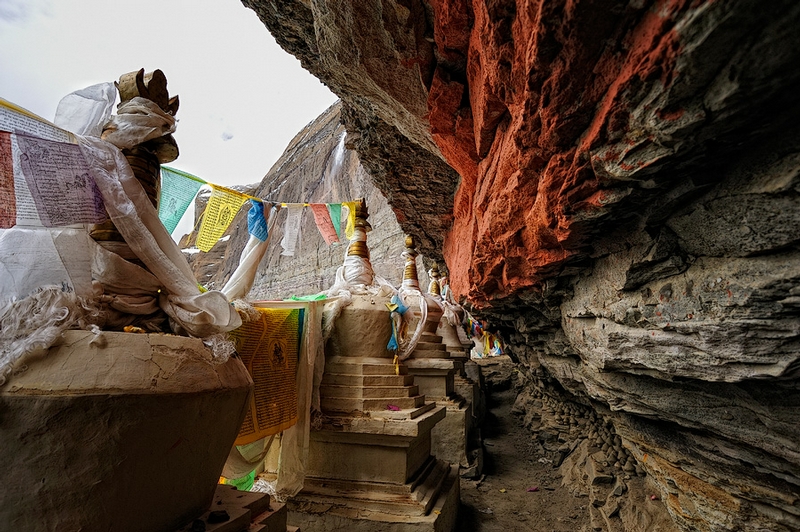
The corridor to Shambhala is decorated with 13 chortens - white
pyramids slightly taller than person's height, in which the ashes of
holy men are kept.
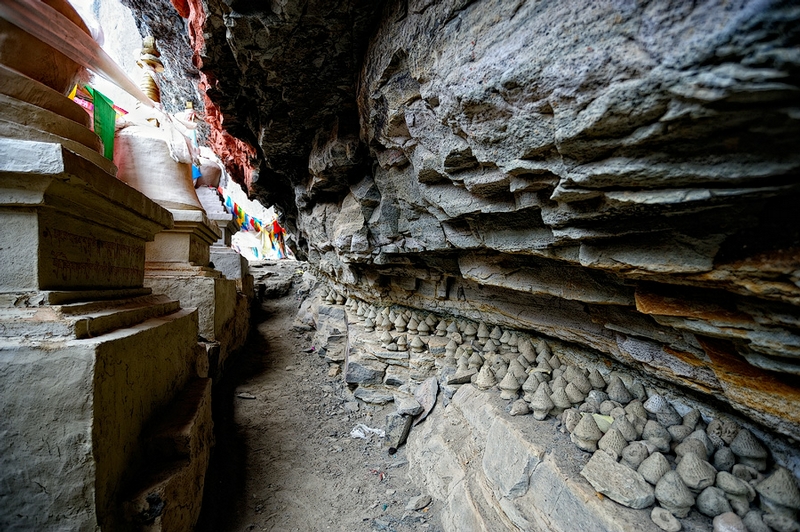
Pilgrims leave various offerings, personal items, jewelry, photographs,
manuscripts and printed prayers here. All this wonder is located at an
altitude of 5800 m. For the reasons of a religious character, pilgrims
never climb higher.
Looking downwards.
The whole world in your palm...
The silver palace of Garuda. Mountains and low hills are composed of
the rock resembling pressed sand of the most incredible colors. It's
hard to believe it was Mother Nature that created all this, and not old
rogues with giant multicolored brushes. Somewhere the breed is baked and
flaked - the result of volcanic activity.
Tibetan Wild West pleases with its splendid cave cities and sandy
temples. Most of them were created long before the Buddhist era. Even if
you consider yourself a person who is difficult to surprise, you'll be
probably shocked. This is just another planet! Absolutely fantastic
landscapes and legends of kingdoms sometime flourishing here.
Despite all the magnificence of these places, people left them. The
climate changed and the once blooming valleys turned into a grim mixture
of deserts and mountains decorated with caves that are now visited only
by rare pilgrims.
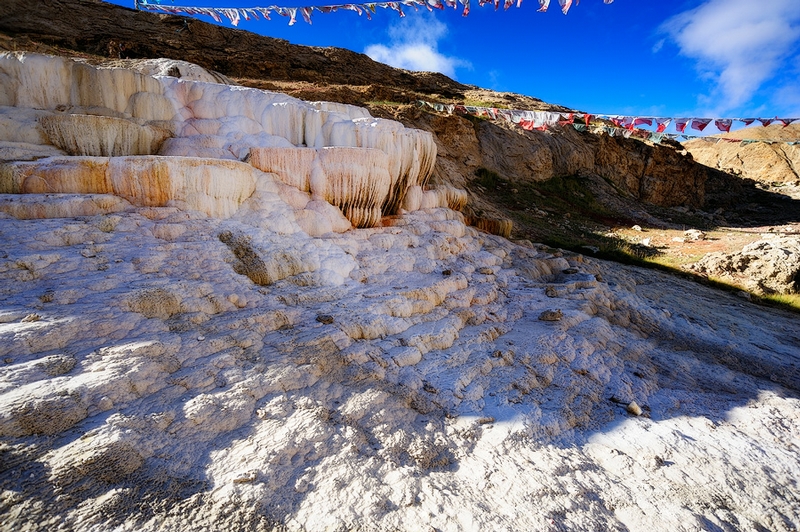
Hot springs near the river.
For centuries, pilgrims have been bringing here the stones with mantras cut out on them.
Half-ruined stupas.
Each cave is somebody's former home or a part of a temple.
The Silver Palace of Garuda is at the very top. Don't even try to climb there without any equipment. It's very dangerous!
Hundreds of small figurines made of baked clay are inside the stupas.
The heads of cows, sheep and yaks hang under the bridge. They are a part of Bon rituals.
A Bon cave monastery.
The girl at the gate of the Bon monastery.
The Kingdom of Guge. Buddhism began its victorious march on Tibetan soil from here.
Morning...
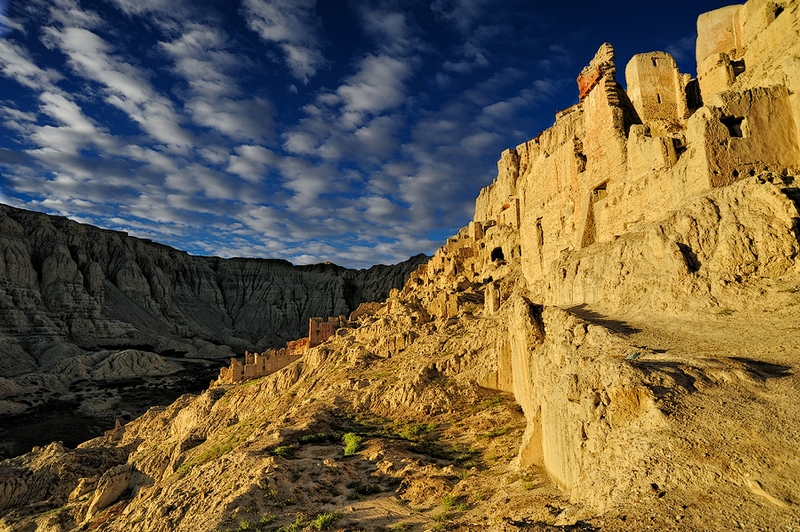
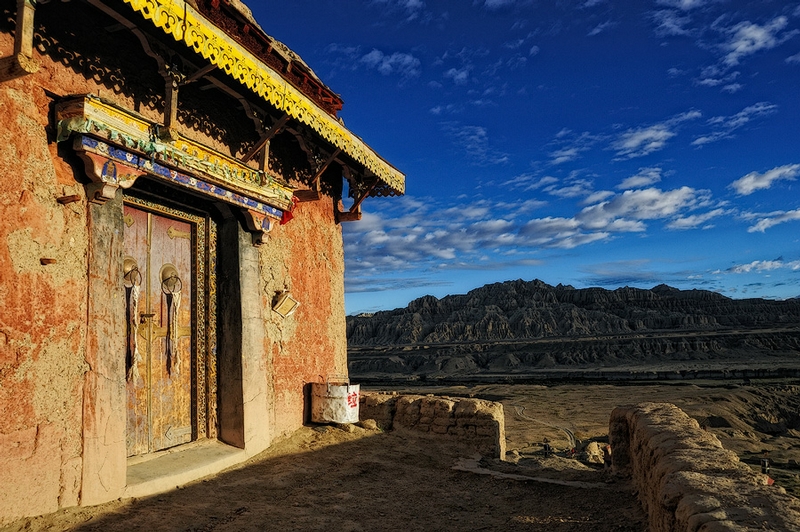
A temple complex at dawn.
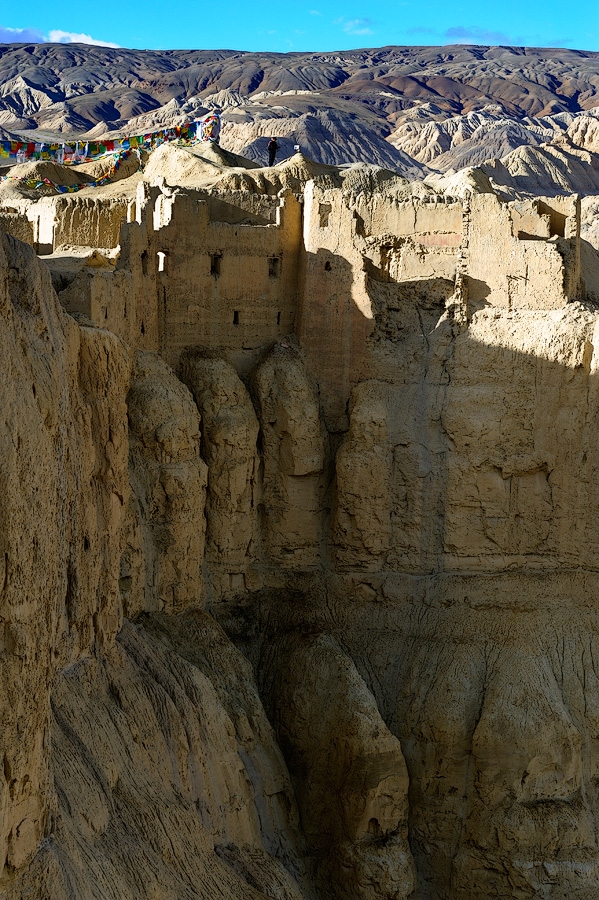
Afternoon.
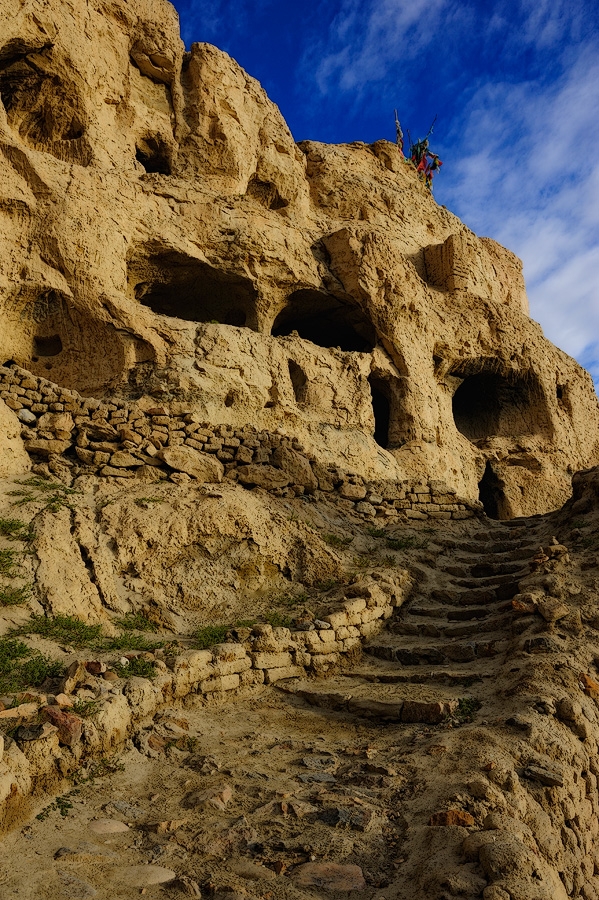
via oldkurik





No comments:
Post a Comment